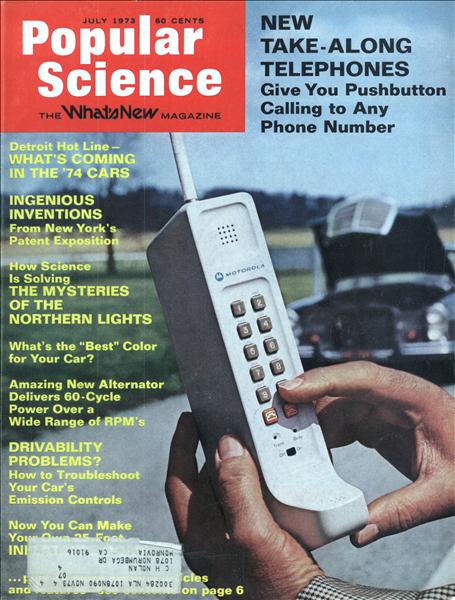
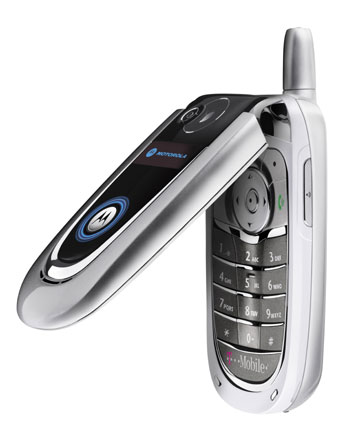
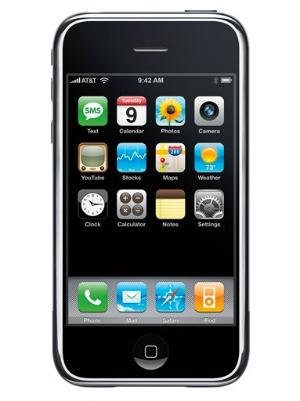

| Decade | 1980s, 1G | 1990s, 2G | 2000s, 3G | 2010s, 4G |
| Coverage | Outdoor | In/outdoor | Global roaming | Global roaming |
| Applications | Business voice | Consumer voice | Voice and some data | Data, including voice |
| Data speed | 9.6-28kbps | Up to 100 kbps | Up to 2 mbps, slower in a car | Up to 100 mbps |
| Status | Obsolete | Deployed | Deploying now | LTE technology is expected to beat mobile WiMAX, Japanese launch December 2010 |
| Connection mode | Circuit | Circuit | Packet -- always on | Packet -- always on |
| Hand set |  |
 |
 |
 |
The speed figures given above are general estimates, but ARCchart, a wireless market research company, has gathered data on download speeds using GSM, the most common global cell phone technology. As you see below, the actual speeds achieved in different cities and neighborhoods vary. While the most common 3G connection speed is around 1,000 kbps, it can go as low as 300 and as high as 1,600. (Click here for more on the coverage and speed variability).
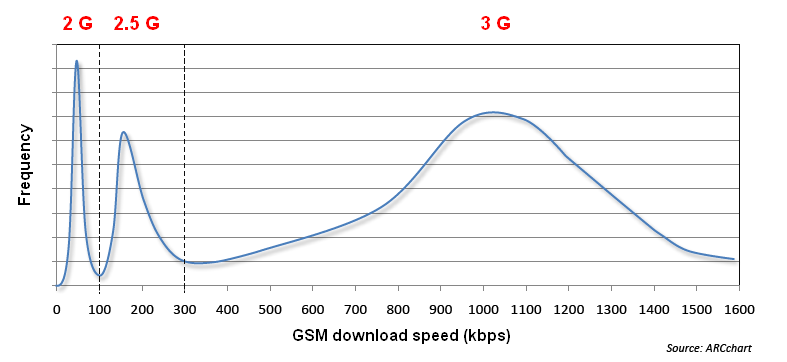
Japan rolled out 3G cellular radios faster than other nations, and the market their is nearly saturated today. Other nations are moving to 3G, and, by 2013, the market research firm Telegeography predicts China, India and the US will have surpassed Japan in the number of 3G users. By 2014, they expect China to be the largest 3G nation. But, by 2014, fourth generation cellular will be rolling out, driven by demand for mobile Internet access.
Here we see the global projection for 2013 from Telegeography:
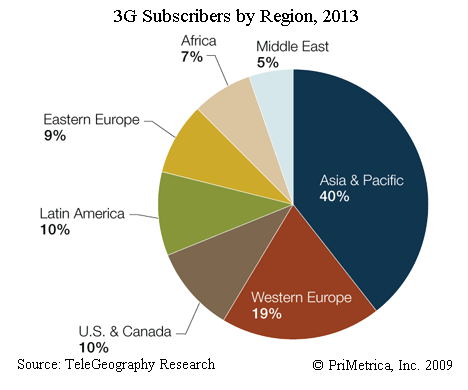
| Cell phones require large investments in antennae and radios. The antennae on the left were installed on the stadium light pole of a school which leases the antenna space for $6,000 a year. The towers on the right are disguised. (Click here for more pictures of cell antennae). | ||||
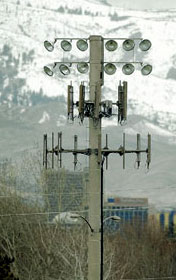 |
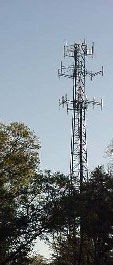 |
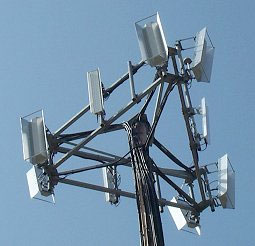 |
 |
 |
There are many cellular towers near CSUDH.
Companies like Inmarsat offer connectivity nearly anywhere on Earth using LEO satellites, but they are slow and very expensive.